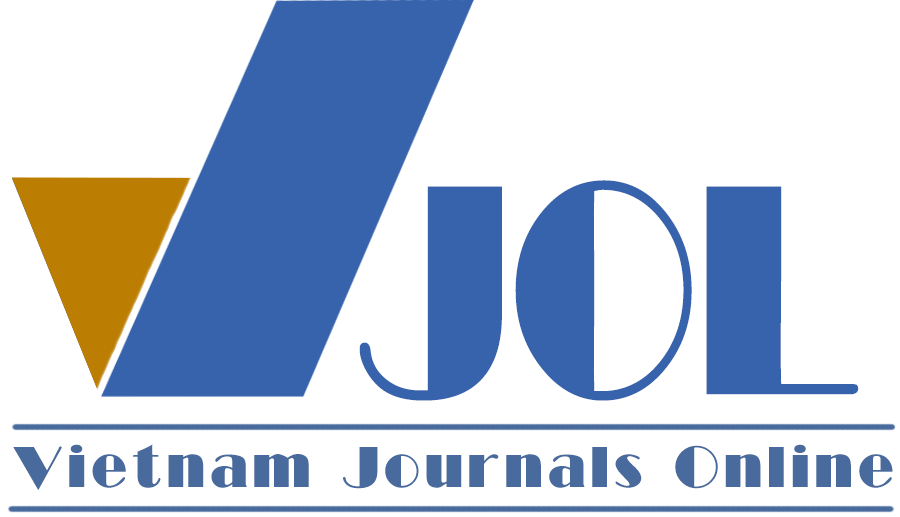Twin deficits in Vietnam: Signs of return and some recommendations
Authors
DOI: https://doi.org/10.57110/vnujeb.v3i2.167Keywords:
Twin deficits, current account, the government, VietnamReferences
Anh, N. L. (2018). Twin deficits in Vietnam: Situation and solutions (Doctoral thesis). Foreign Trade University, Vietnam.
Afonso, A., Jalles, J. T., & Kazemi, M. (2022). Twin deficits revisited: A role for fiscal institutions? Journal of International Money and Finance, 121, 102506. https://doi.org/10.1016/j.jimonfin.2021.102506
Banday, U. J. & Aneja, R. (2016). How budget deficit and current account deficit are interrelated in Indian economy. Theoretical and Applied Economics, XXIII, 1 (606), 237-246.
Beckmann, J., Belke, A. & Gros, D. (2022). Current account (im-)balances - determinants and policy implications. Journal of International Money and Finance, 121, 102518. https://doi.org/10.1016/j.jimonfin.2021.102518
Bon, N. V. (2014). Current account and fiscal deficits evidence of twin divergence from selected developing economies of Asia. Southeast Asian Journal of Economics, 2(2), 33-48.
Constantine, C. (2014). Rethinking the twin deficits. MPRA Paper No. 58798. The Journal of Australian Political Economy.
Dan, N. V. (2014). Twin deficit in Vietnam and some policy recommendations. Vietnam Journal of World Economic and Political Issues, 07(219), 64-71.
Jayaraman, T. K. (1993). Fiscal deficits and current account imbalances of the South Pacific Countries: A case study of Vanuatu. Asian Development Bank - Economics and Development Resource Center, Occasional Papers, Number 4.
Karras, G. (2019). Are “twin deficits” asymmetric? Evidence on government budget and current account balances, 1870-2013. International Economics, 158, 12-24. https://doi.org/10.1016/j.inteco.2019.02.001
Huong, H. T. L. (2016). Current deficit in relation to the budget and macro factors - research on Vietnam and Asian countries. In Proceedings of the National Scientific Conference “Vietnam’s International Financial Activities in the Period of International Economic Integration”. National Economics University Publishing House, Hanoi, 166-179.
Pual, C. H., Lau, E. & Tan, K. L. (2006). Budget-current account deficits nexus in Malaysia. The Journal of Global Business Management, 2(2), 126-135.
Rajakaruna, I. & Suardi, S. (2021). The dynamic linkages between current account deficit and budget balance deficit in the South Asian Region. Journal of Asian Economics, 77, 101393. https://doi.org/10.1016/j.asieco.2021.101393
Trinh, T. T., Dung, L. P., Trang, N. T. T. (2013). Analysis of the relationship between fiscal deficit and current account deficit in Vietnam. Banking Magazine 6, 02-06.
International Monetary Fund (IMF). (2023). Vietnam - Country Data. https://www.imf.org/en/Countries/VNM#countrydata
World Bank. (2023). World Development Indicators. https://databank.worldbank.org/source/world-development-indicators
General Statistics Office of Vietnam. (2023). Statistical Data of Vietnam. https://www.gso.gov.vn/so-lieu-thong-ke/
Ministry of Finance of Vietnam. (2023. Public Finance Portal. https://ckns.mof.gov.vn/SitePages/home.aspx
Downloads
Downloads
Published
Abstract View
PDF Downloaded
How to Cite
Issue
Section
License
Copyright (c) 2023 Nguyen Lan Anh

This work is licensed under a Creative Commons Attribution-NonCommercial 4.0 International License.
by VNU Journal of Economics and Business






